Catching the slow train
This week: Direction dependant; Replacing the car; Slow train to Zagreb; Buying a car; Lions and tigers and bears; Downhill all the way ;

The temperatures are starting to fall quickly, having dropped by an average of 5º C between the start and the end of the week.
Leaves on my Myrobalan plum are falling thick and fast. It is the first fruit tree into leaf in the spring. The tree has lovely bronze leaves all summer and is the first to lose its leaves in the autumn.
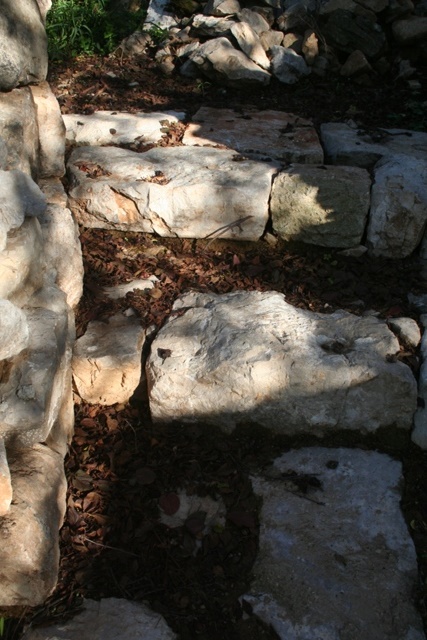
Even the Witch Hazel I included last week,
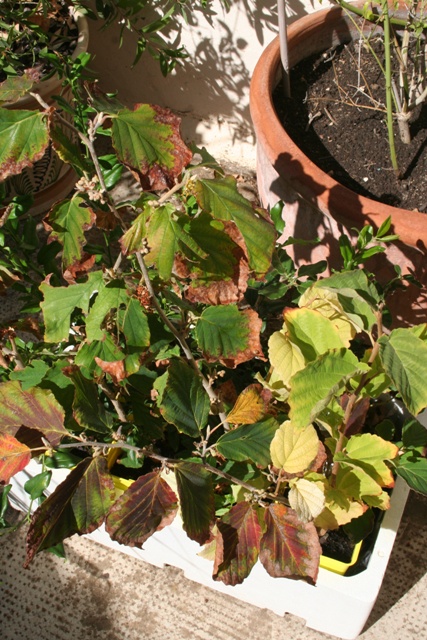
has turned from green to scarlet, and then dropped its leaves.

I’ve had long trousers on this week for the first time in many months. At night there is now a definite chill in the air – at least there is when you are still wearing Tee shirts. But we are into October, so it is only to be expected…
Direction dependant
The forecast rain arrived on schedule on Wednesday. There was just short of 20mm recorded by my weather station, most of it during an hour long thunderstorm. We had an hour and a half power cut due to lightning striking a pylon just for good measure too.
When I checked the inside of the shed on Thursday morning, it was completely dry. I then had to go cross to Grad Hvar to meet the Catamaran from Split.
Taking the old road over the backbone of the island, there was a big storm out to the south. I could see sheets of rain falling and multiple lightning flashes. I made it to the ferry just before the hevens opened.

Getting back to my Dol house, it was still raining and in the afternoon I checked the shed. This time, more water had come through the rear section somewhere and the stains were showing on the plywood walls, from top to bottom.
I checked the joint which I had double sealed last week, and it was intact. Clearly rain is getting in, but only when it is coming from a southerly direction, however I cannot find where.
We do get a lot of rain on southerly winds. The remedy is to put a sheet of plastic over the end to seal it for good (I hope). This was completed on Friday.
I’ve left the door open to let it dry before I move anything in there next week.
Replacing the car
Having been looking for a replacement car, I narrowed the field down to ones whose size could fit through my “donkey entrance”, that I liked and were within a reasonable price range.
I didn’t want “new”, but also I didn’t want a high milage, well used, even if well cared for, vehicle.
The list of possibles that matched my entry critera was fairly short. There are vehicles I like the look of, for example the Dacia Duster and Suzuki Jimny, but the Dacia was too wide and used Jimny’s are few and far between.
I had looked at a Citroen DS3, but then the seller disclosed that it used oil – a red flag for an engine problem of some sort.
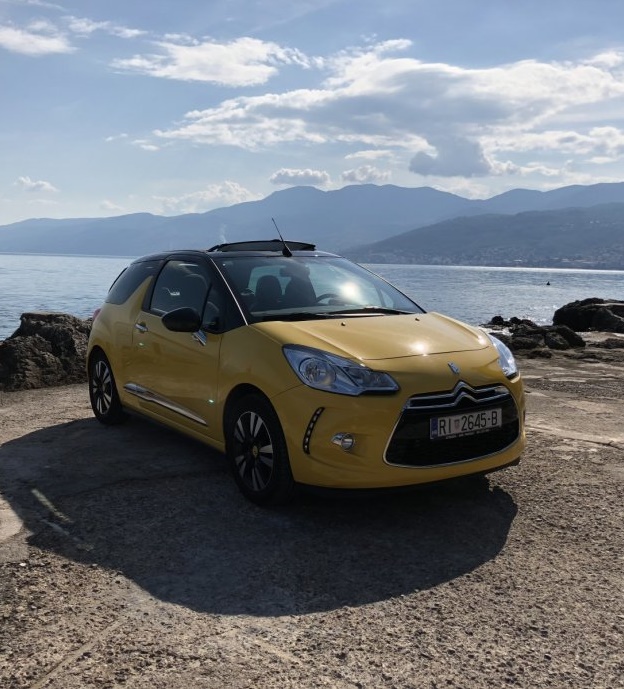
I owned a Citroen GS in the past and it was a really comfy car, but let down by early bodywork corrosion.
My friend Cvjetko has bought a Škoda Fabia. He brought it round for me to try. I could manoeuvre it in through my gateway without too much difficulty. It’s a little wider than my old Suzuki, but I could still get in in without the mirrors touching the stone walls, just.
Cvjetko took me to see a Škoda Roomster – the only one on the island – nice, but not for sale. I went over to Split where there were two for sale, one diesel and one petrol.
The diesel sounded like a Massey Ferguson 135 tractor. Both were black, had not been used on the road since 2017 and were sizzling in the autumn sunshine. I don’t like black cars anyway, but they were comfortable to sit in.
Our online sales website here is called Njuskalo. There isn’t a dedicated eBay site for Croatia and although there are a couple of other smaller selling websites, Njuskalo is where most people look and both companies and individuals sell things.
I found a Roomster for sale in Zagreb. However Zagreb is a very long way from Dalmatia. 430 kilometres from the ferry terminal in Split, so although the car looked nice, was well appointed, and had relatively low mileage, I tried to find something closer.
But after six weeks of searching and without finding anything remotely suitable, and at the right price, I decided I needed to go and look at the car.
Whilst I have had the use of my German friends Land Rover, a very gracious loan, with winter approaching I really needed to get back into the business of owning my own car again. So the arrangements were made with the dealer to go and look at it.
Slow train to Zagreb
Public transport here runs to time – to the second. The Jadrolinija ferry service leaves exactly as stated in the timetable. At 05:27 the car ramp starts to lift. The securing ropes are loosened and crew are all in position.
At 05:29:15 the ropes are cast off and at 05:29:45 the engine noise increases, the propellers start to turn and at precisely 05:30 the ferry moves gently away from the quay.
The ferries to and from the island rule every part of island life. During the summer tourist months, two vessels are used and there are seven ferries each way. From October to April there are just three sailings each way on the winter timetable.
This means that you really have to plan your timings so you can be sure to catch a ferry, or you will be marooned in Split!
Journey planning starts with identifying the ferry home from Split that you need to catch, and then working backwards.
I realised that to get to Zagreb, with sufficient time to look at the car, complete the paperwork if I bought it and then drive back to catch the last ferry home, I would need to overnight somewhere.
Flying was not economic, the express buses (5½ hours) don’t run overnight but I discovered there was a train from Split to Zagreb, leaving at 21:53 and arriving in time for breakfast the next day.
So on Sunday afternoon, I caught the last ferry to Split from Stari Gard, then waited until the empty train pulled into the main station, next to the ferry port, and found my seat.
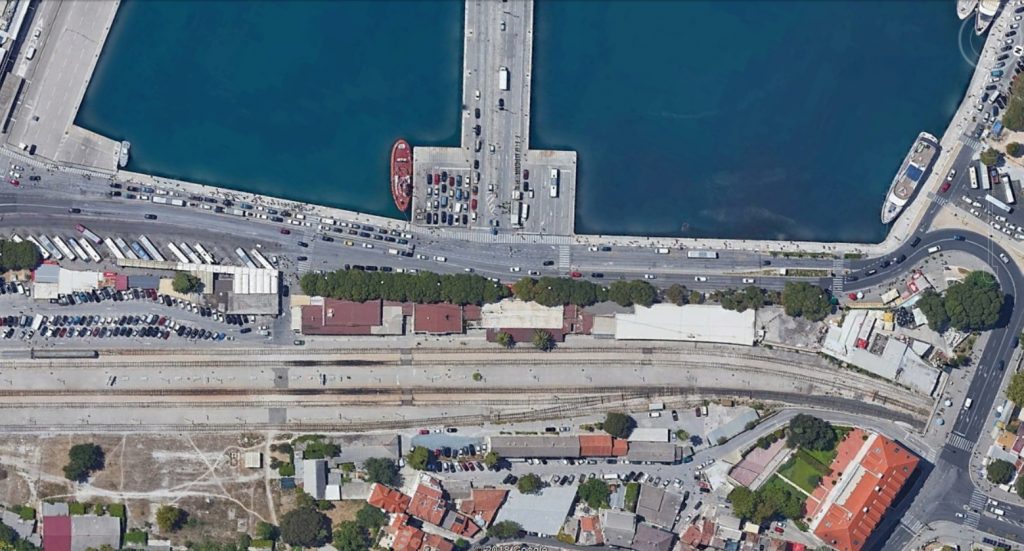
The Croatian railway system is being slowly modernised. . There are good links to most European capitals from Zagreb and in the north where there are extensive commuter lines, new fast DEMU’s are in service.
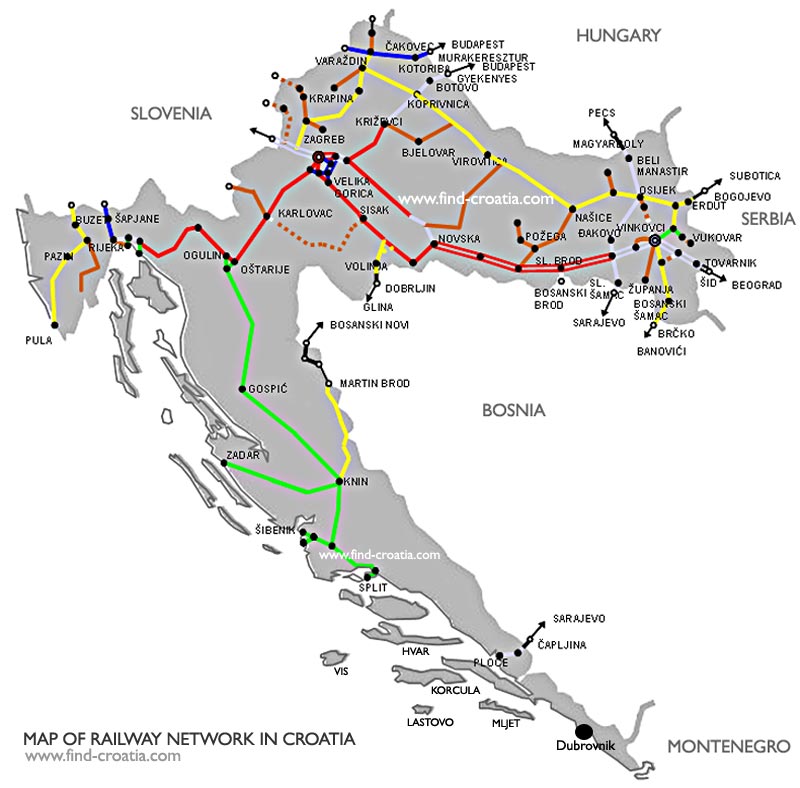
The railway terminus in the south is Split. If you want to travel on to Dubrovnik or into Albania by train, you are too late.
The 760mm narrow gauge (2 ft 5 15⁄16 in) line which used to run from Belgrade, via Sarajevo to Dubrovnik (and took two days) closed in 1976.
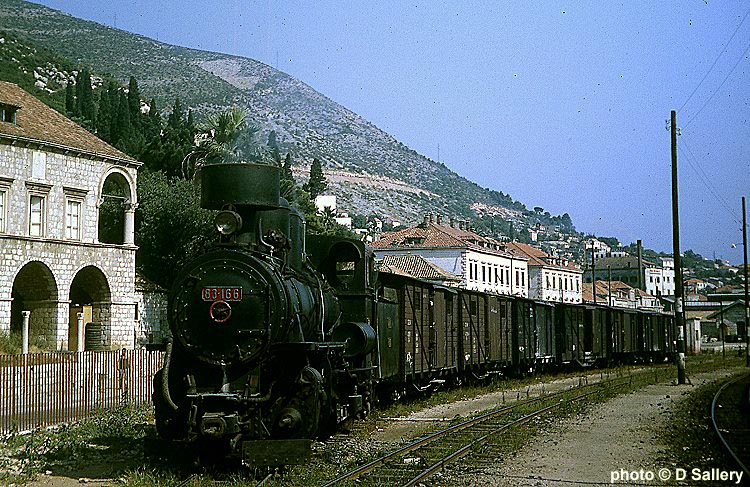
In Dalmatia, there eare also some modern DMU’s but the long distance trains are a little dated. I had a six seat compartment to myself on the three coach train.

It reminded me of the trains I used to use in the 1970’s in the UK, with opening windows and sliding compartment doors. Comfy seats with head rests and steam heating. “Slam doors” complete the analogy.
At precisely 21:53, the train strated to move and trundle it’s way north. The ticket clerk had told me that there was engineering work on the line and so there would be a bus service to take passengers between Ličko Lešće and Ogulin.
This is a stopping train. For much of the journey it is single track and as we pulled into small halts, or passed though country stations, and manned signal boxes.
At every one there was a duty official, resplendent in uniform wearing a peaked red top cap – resembling the RMP – to whistle and show a green light to the driver.
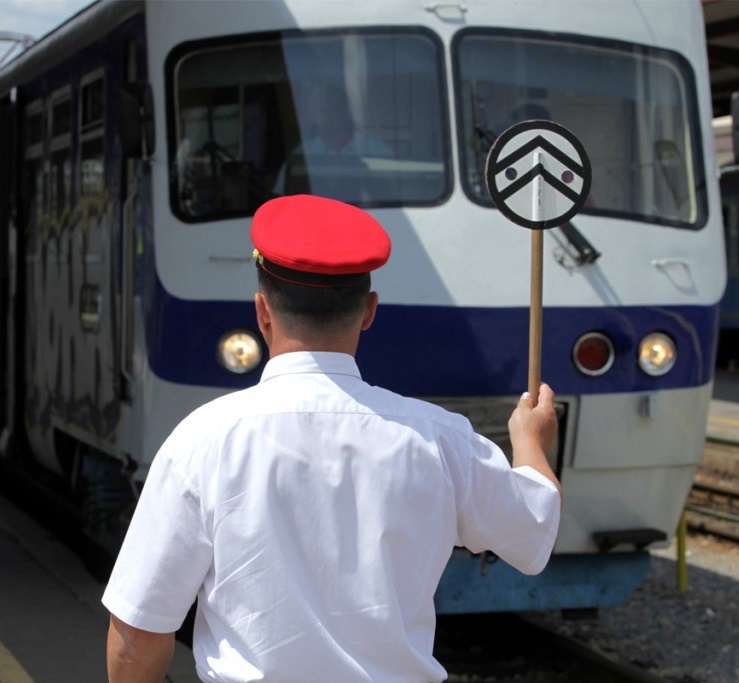
At 02:20 we pulled into Ličko Lešće and all passengers disembarked. Busses were waiting and there was an hour’s road journey to Ogulin.
Another train was waiting for the busses and again I had a compartment to my self. It wasn’t long before were were on our way again and I slept until waking around 6am just as dawn was breaking.
We pulled into Zagreb central station at 06:30. A Slovenian railways inter city train was just departing, looking in the early morning light like a portion of the Orient express.
Just outside the station is one of the really slow trains.

Built in Budapest in 1891, it probably will not be moving anytime soon…

The station was busy, but “busy” is relative. Not “busy” as in Kings Cross or New York Central, more like York or Bristol. I wandered the short distance to the main bus station where I know there are nice restaurants and had breakfast before getting an UBER to the suburb of Sesvete, where the car dealers was located.

I was there for when the dealers opened at 9am.
The process of buying a car
There are two steps to buying a car – or any vehicle for that matter. The first is locating a suitable vehicle, inspecting it, looking at its history, having a test drive and negotiating around the price.
The second part is navigating the legal complexities of the purchase. In the UK, purchasing is fairly simple. Vehicles generally retain their registration mark for life, and unless the number is special, and is transferred, the number and letter identifier where it was first registered stays with the vehicle, throughout its life.
In Croatia, vehicle registrations are handled at the Teckniki Pregled – vehicle inspection stations. You are required to have a number issued in the area where you live. when you move, then old plates are handed in and new ones are issued. The first two letters identify the issuing area. There are 34 in total and for my area plates all start with ST – Split.
After looking at the Roomster, checking it’s service record, I decided I would buy it. I paid cash, in € and HRK notes. Next the paperwork was prepared for the registration.
The car had been imported from Belgium so has never had a Croatian registration. The first process was Homologation. I have never heard of this happening in the UK and certainly I have never seen paperwork with any vehicle, but my car came with an official, individual certificate of Homologation, issued by the Škoda factory on the day it was built.
The longer I live in Europe, the less I understand about why and how different the UK has been in relation to systems and processes that Europeans take for granted. I suppose the UK managed to get “opt outs” for everything.
At the testing station, the homologation was done first. It is a pass/fail. Digital photographs of the car were taken to be added to the vehicle record.
Next it had its technical test, with checks of the emissions, dynamic components, all lights and ancillaries.

It passed and the windscreen sticker was attached. The final part was to issue it with a registration number and for the number plates to be issued and fixed to the car.
I have descrtibed in three paragraphs what was in effect a two hour process, but in the end I came away with a fully legal vehicle, thanks to the help of the staff from the car dealers and Teckniki Pregled. I now have a collection of various important documents, to be filed and kept for the future.
Lions and tigers and bears
I needed to be back in Split for the last ferry of the day, so although Mr. Igor at the car dealer wanted me to stay and have lunch with them, I had to decline the kind offer, so I could get on the road south.
The city of Zagreb is at the edge of a wide fertile plain. It is mainly around 160 meters above sea level, however in travelling south to Split, you have to cross the Dinaric Alps.
The Autocesta (motorway) is part of the E65 route, which runs from the Baltic to the Mediterranean. In Croatia, it is numbered as the A1.
The road winds south and you notice the change in the landscape as you travel. It was nice to set my destination into the on board GPS, enter my speed into cruise control and engage the autopilot.

This is the first car I have owned that has all these modern, built in computers, systems and even reversing cameras. I think perhaps I should add a couple more instruments, maybe a VSI and a barometric altimeter.
As you leave Zagreb the A12 passes through farming communities. Further south as the road climbs, deciduous trees give way to coniferous. The first hints of autumn were evident in the deciduous bushes beside the highway.

This road have been built to high standards, with European money. At several points along the way there are short tunnels which are wildlife corridors. These allow populations of large mammals, Black Bears, Wolves and deer to safely cross the highway.

Gradually the massive Dinaric Alps come into view. Generally covered in clouds, the highway climbs gradually to the Sveti Rock (Saint Rock) tunnel. This is the highest point of the journey, at 561 meters. The tunnel is more than five and a half kilometres long and has been bored through the alps greater than 500 meters below the peaks above.
As you leave the southern portals, there is a wide vista across lake Karinsko to Zadar and the Adriatic sea in the distance. The Autocesta descends rapidly to the graceful bridge at Maslenica, which is just 170 meters above sea level. The original bridge was destroyed during the Croatian War of Independence in 1991.
There are motortway services here, where when I travel the route I like to stop. They are a little less than two hours away from the ferry at Split.
Downhill all the way
Leaving the service area the scenery has changed. This is the coastal landscape of low shrubs, grasses and exposed rock.
It always seems as though it is all down hill from here to Split. About an hour north, the limestone mountains which surround the bay of Split come into view. These are all topped with wind farms, generating electricity for the grid.
I leave the Aurocesta at Dugopolje. The Autocesta is a toll road, and the journey from Zagreb cost me the equivalent of £20.
There is another new highway that leads directly into Split. As I arrived, the sun has just set and there is the most beautiful sunset sky with a wafer thin New Moon just visible. There is nowhere to stop so, sorry, no photographs!
I arrived in good time for the ferry, bought my ticket and was on the last sailing of the day at 20:30. A distance of 450 kilometres with 5 litres of fuel per 100 kilometres used.

It was 22:45 when I actually arrived home and pulled up at the gate.
I am pleased to say that the new car fits nicely between the stone pillars, with about two centimeters to spare.

The car comes with a set of winter tyres.

Throughout Croatia, except Dubrovnik county, winter tyres are required between November 15th and April 15th.
Not that we get a lot of snow in this part of the world, but the police still carry out checks on the island and issue fines for not using lights at all times of day and for not having winter tyres! NRC
5 Responses
Andrew Robinson
Good choice of car and interesting tale of your journey!…. Skodas very popular here. Not so sure about your shed building skills though, maybe plywood wasn’t a wise choice.
Tony Griggs
Interesting following Yr journey Norman. Did you hand over the money for the car before getting that all important pass/fail certificate issued? Lol. No need for an altimeter. You will most of the time will no doubt be at or close to sea level 😉.
Elizabeth B
Hi Norman, Skoda – good choice, our Octavia has been with us since 2007 and is running better every year. Unfortunately it’s a diesel – dirty word these days – but we are getting better mileage/gallon than ever. Had problems with starting a couple of years ago – ended up not starting at all. It went to it’s servicing garage in North Newbald and they had to resort to getting in a motor electrician who took two days to track down the problem. Turned out it was a tiny split on one wire. A workaround was installed and it starts better than it has ever done! Perhaps a problem from new, that slowly got worse with age.
Anyway, love your description of the journey and, in particular, the road bridge for wildlife. It is the sort of thing we talk about regularly… could we have a proper copy of your photo, with permission to use, if necessary, for our reference library and in reports. We would, of course, credit you (if you would like).
Glad you have wheels again.
Love from us all, Elizabeth
Andy Obridge
Great result with the car Norman. You are oblivious to the moaning and groaning on expats groups but just shows, with proper planning anything can be done here. You had it quite easy though, a decent dealer and now MUP, the Police, not involved!! Just to get ‘proper’ ST plates for it now!
Yes the weather is turning, for the better! Daily watch on my olives for them turning black and then it will be all hands to the trees!! Looking best I have had since 2012!
Marcy Fletchall
Hi Norman, Love the new car. I haven’t heard of it in the States but it looks great and from your tale, sounds efficient. The weather is turning here as welll with a 2″ snowfall this am. We are anticipating a very early winter.
Thank you for your continued account of your life’s journey. I’m grateful to be included. Hope you have a lovely week. Marcy